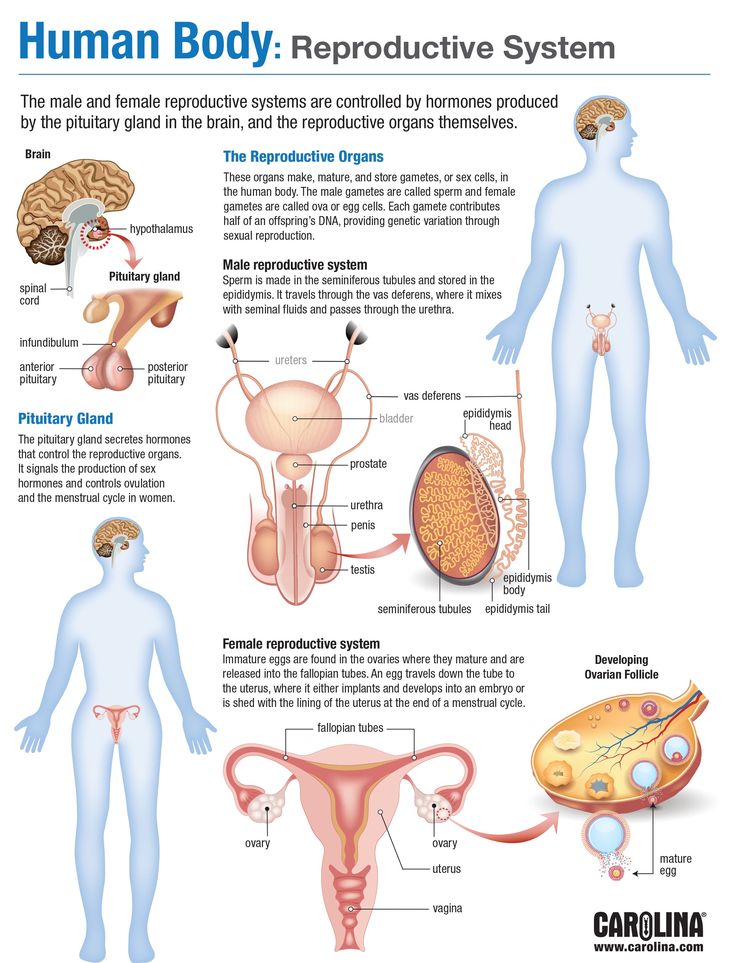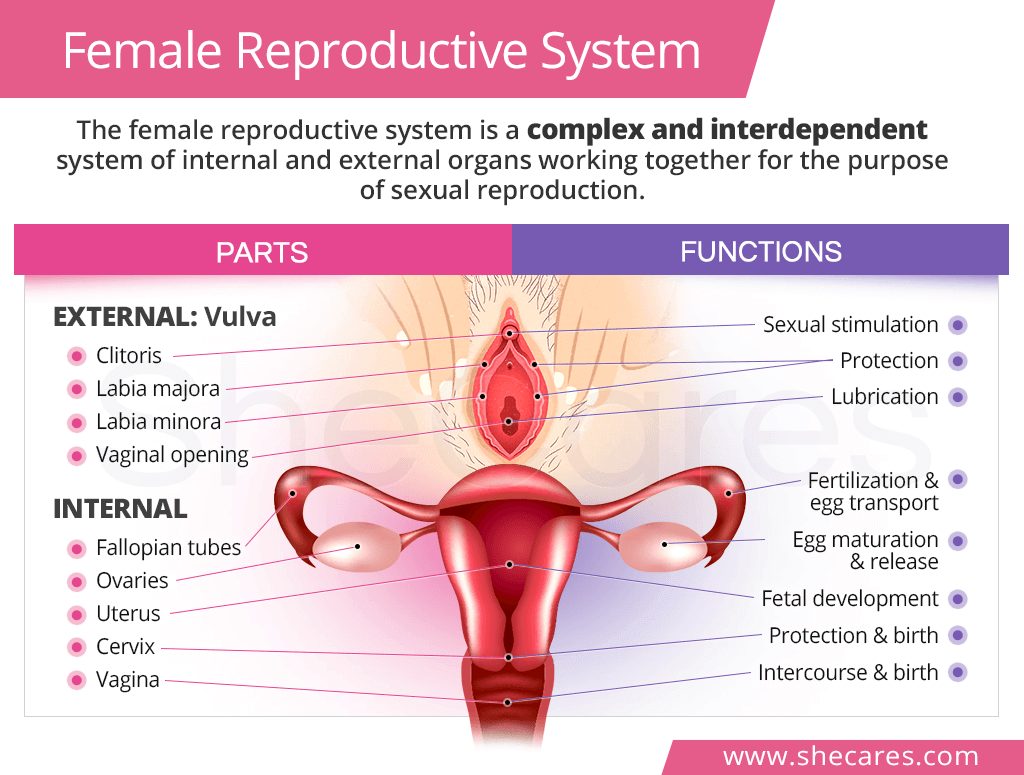Reproductive System Anatomy
The reproductive system in both females and males is located within the lower part of the body. While the female system is situated within the pelvis, the male system resides outside the pelvis. The systems contain both internal and external organs. Internal male organs include the duct system, which comprises the vas deferens and epididymis, the testicles, and the accessory gland (Osol, 2021). External male reproductive organs include the penis and the scrotum. The key cell type of the male reproductive system is male gamete, also known as the sperm, which carry the man’s chromosomal copies to the offspring.
Internal female organs include the vagina, fallopian tubes, uterus, and ovaries. The vulva, which comprises the labia majora and minora is the external female reproductive organ. The female key cell type is the ovum, which combines with the make gamete after copulation to form a zygote (Osol, 2021). The zygote develops through various growth stages to become a fully-formed fetus.
Anatomy of the Reproductive System

The image above shows the human reproductive systems’ location relative to the other body organ systems. The reproductive organs receive instructions from the pituitary glands in the brain. The gland stimulates production of sex hormones, which in turn control reproductive functions like ovulation in women and reproduction of testosterone in men (Osol, 2021).
Reproductive System Physiology: Functions
The physiological functions of the reproductive system range from controlling the sex hormones, to facilitating nurturing of a child after birth. The system produces the gametes and stimulates secretion of the sex cells to encourage mating (Osol, 2021). During copulation, the male and female organs facilitate fertilization by providing a conduit to transport the sex cells into a site of fertilization (Osol, 2021). After fertilization, the reproductive system (womb/uterus) provides a suitable environment for the growth and development of the offspring. The system also produces the necessary hormones to sustain a pregnancy, and also facilitates childbirth and child nurturing after birth. While the female reproductive system continues to support the pregnancy after fertilization, the male reproductive system does not perform any reproductive functions after this process.
Reproductive System Physiology: Diagram

The diagram above demonstrates the reproductive functions of internal and external female organ system. Sexual reproduction starts when male and female gametes fuse after sexual intercourse. Cellular division that leads to the division of the chromosomes follows, ensuring that the gametes have sufficient chromosomes for survival. Meiosis begins with the primary spermatocyte or oocyte (Osol, 2021) that contains forty-six pairs of chromosomes, during meiosis I genes of the gamete are crossed over and secondary gametes are produced the secondary gametes will then go through meiosis II to create cells that have only 23 chromosomes or spermatids and ootids (Osol, 2021). The twenty third pair of chromosomes on this cell will be a completely new set of sex chromosomes where xx will be a female and xy will be a male.
Relationship to Secondary System
The homeostatic interrelationship between the reproductive system and the endocrine system is dynamic and complex. GnRH, released by the hypothalamus and triggered by fluctuating estrogen, testosterone, and inhibin levels, stimulates the anterior pituitary gland to release FSH and LH (White, Harrison & Mehlmann, 2019). These 2 hormones are the driving force of the reproductive system for both males and females.
Dependence of Human Body the Relationship
The gonads are organs in both the reproductive and endocrine systems. They have receptors for LH and FSH from the pituitary gland, which cause the production of egg/sperm cells and the hormones testosterone, estrogen, and inhibin (White, Harrison & Mehlmann, 2019). The timing of release of these hormones manages a delicate balance that control the menstrual cycle in females and sperm production in males.
Medical Issues
One disorder related to the endocrine system that affects the female reproductive system is uterine fibroids, also known as leiomyomas and myomas. Uterine fibroids are abnormal, non-cancerous growths in one or more of the 3 uterine layers (Osol, 2021). These growths increase in size from estrogen and can cause dysmenorrhea, abnormal uterine bleeding, and fertility issues.
For the male reproductive system, a hormone imbalance with the hypothalamus, pituitary gland, and/or testes can cause abnormal production or release of testosterone, leading to low sperm production and male infertility (Osol, 2021). For both genders, infertility can be personally devastating and affect the long-term health as described in the article, Fertility and Mental Health, by MGH Center for Women’s Mental Health. “The most common effects are stress, depression, anxiety, reduced self-esteem, as well as a sense of blame and guilt”.
References
Osol, G. (2021). Physiology of human reproduction: Notes for students. John Wiley & Sons.
White, B. A., Harrison, J. R., & Mehlmann, L. (2019). Endocrine and the reproductive physiology. Elsevier.